SUPERCHARGE YOUR ONLINE VISIBILITY! CONTACT US AND LET’S ACHIEVE EXCELLENCE TOGETHER!
Using data to its fullest potential has become essential for companies trying to make sense of their online presence in the modern digital world. Let us introduce you to the Google Analytics Data API, an essential resource for any data-driven company. This thorough manual acts as a road map, guiding users through the complexities of the Google Analytics Data API and enabling them to extract insightful information from website visitors.
Fundamentally, the Google Analytics Data API gives users access to a wealth of data that is gathered by Google Analytics, the preferred tool for monitoring the operation of websites and apps. Using and accessing this abundance of data has never been easier thanks to its smooth integration into the Google Developer Console. The API provides a comprehensive picture of digital interactions, including traffic patterns and user activity, empowering organizations to take well-informed decisions and accelerate growth.
This tutorial walks users through the setup process step-by-step, explaining the nuances of setting up the API in the Google Developer Console. Every phase, from project creation to API activation, is carefully described to guarantee a seamless and effective onboarding process. Even people who are unfamiliar with API integration may easily complete the setup procedure and start their data-driven journey with the help of clear instructions and screenshots that have been annotated.
What is Google Analytics Data API
The Google Analytics Data API accesses report data in Google Analytics.
The Google Analytics Data API stands as a pivotal gateway for businesses and developers seeking to delve deeper into the wealth of information encapsulated within Google Analytics. At its essence, this API serves as a conduit, facilitating the extraction and manipulation of data residing within the Google Analytics platform. In essence, it acts as a bridge, enabling seamless communication between external applications and the vast reservoir of analytics data collected by Google.
In practical terms, the Google Analytics Data API opens doors to a myriad of possibilities for businesses and developers alike. By providing programmatic access to an extensive array of metrics and dimensions, it empowers users to tailor their data retrieval process to suit their specific needs and objectives. Whether it’s monitoring website traffic, analyzing user engagement, or tracking conversion rates, the API offers unparalleled flexibility and granularity in data extraction.
Moreover, the Google Analytics Data API transcends traditional boundaries, fostering innovation and integration across diverse digital ecosystems. Its versatility extends beyond standalone analytics platforms, seamlessly integrating with other applications and services to enhance data-driven decision-making. From custom reporting solutions to automated data pipelines, the API serves as a linchpin in the creation of sophisticated analytics workflows, empowering businesses to extract maximum value from their digital endeavors.
In essence, the Google Analytics Data API epitomizes the democratization of data, granting users unfettered access to the insights that underpin online success. By bridging the gap between raw data and actionable intelligence, it catalyzes innovation, drives efficiency, and empowers businesses to stay ahead in an ever-evolving digital landscape.
As businesses grow increasingly reliant on real-time insights, the importance of tools like the Google Analytics Data API cannot be overstated. It supports faster, smarter decision-making by putting reliable, customized data into the hands of analysts, marketers, and executives alike.
Furthermore, as data privacy and compliance regulations evolve, this API provides fine-grained control over what data is accessed and how it is used, helping organizations maintain trust and integrity.
Developers also benefit from strong documentation and a robust support community, which accelerates implementation and reduces troubleshooting time. With features like cohort analysis, audience segmentation, and multi-channel funnel reporting, the API enables users to extract precise, contextual insights from complex datasets.
Ultimately, the Google Analytics Data API represents a powerful foundation for building scalable, intelligent analytics solutions that align closely with organizational goals. Whether you’re a startup or an enterprise, embracing this API is a step toward smarter, more data-literate digital operations.

Steps To Follow
From Google Developer Console dashboard > go to Select a project > New Project > Give Project Name > Click on Create’, as shown here.
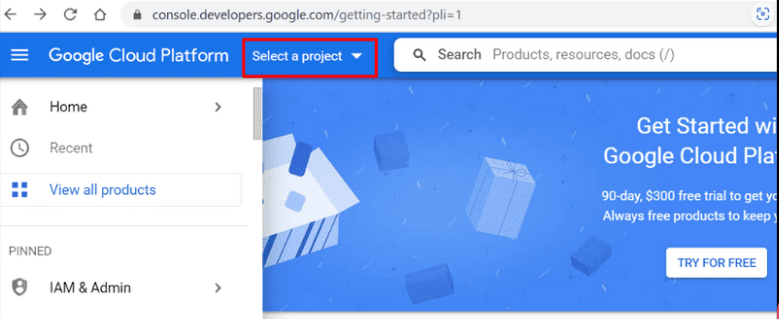
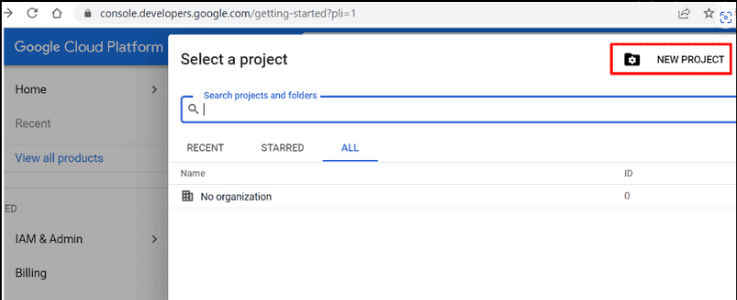
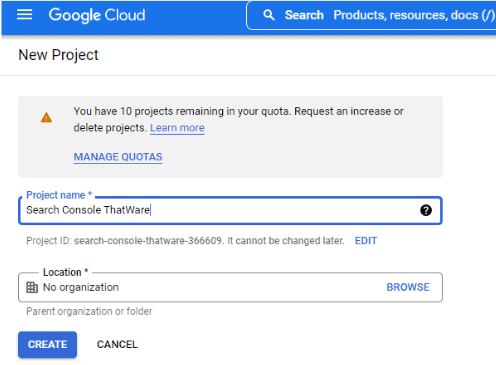
A notification will appear instantly as shown here

Thereafter select API & Services > Credentials
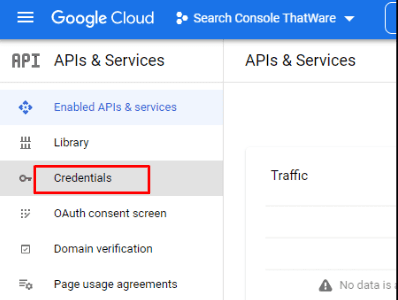
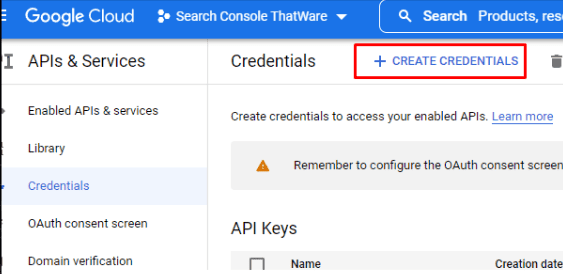
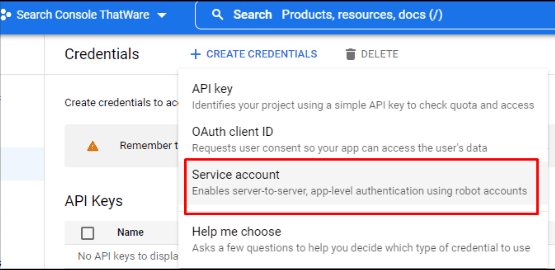
Then click on Create and Continue button
Next, Select Role to Owner and click > continue > done as shown below:
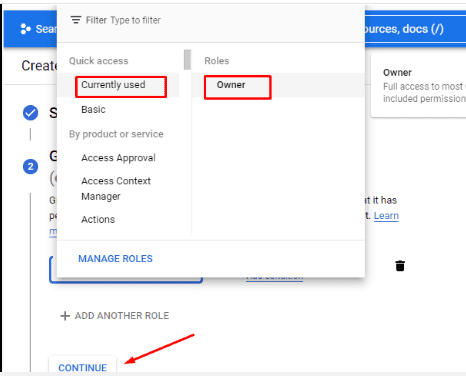
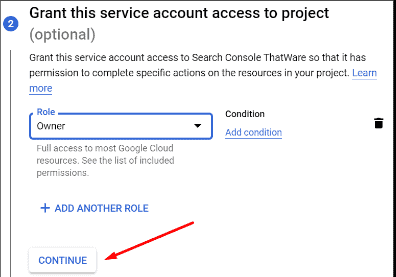

Once the complete setup done, then copy the marked generated email to a notepad for future use:

Then click on this marked email and add key as shown below:
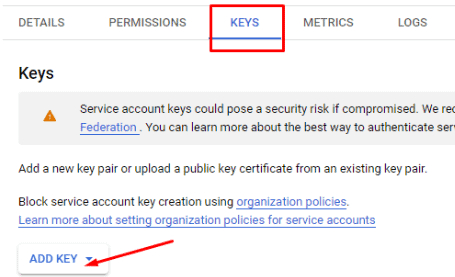
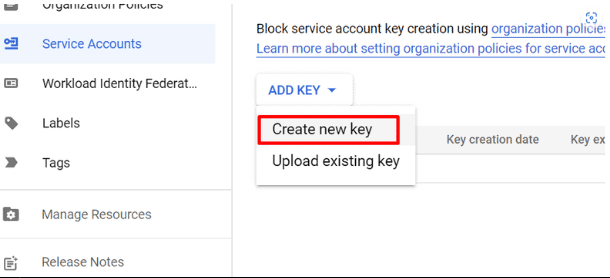
Then select JSON and click on Create
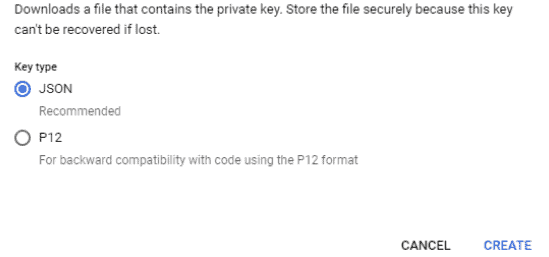
A private key will be saved on your computer automatically.
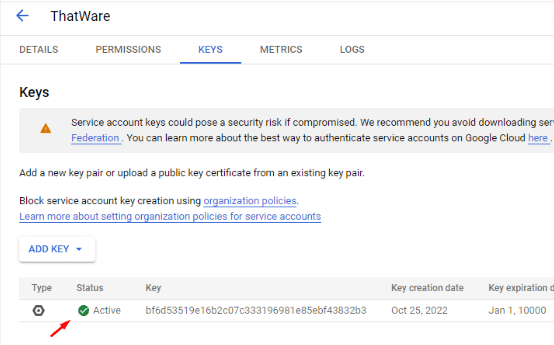
Now, let’s move on to enabling the API part. Here are the steps to consider:
Click on left hamburger menu > APIs & Services > Library

Then search google analytics data api on the library.
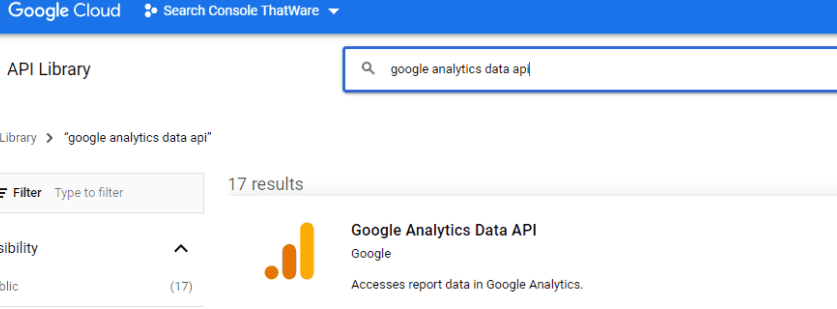
And click on Enable option
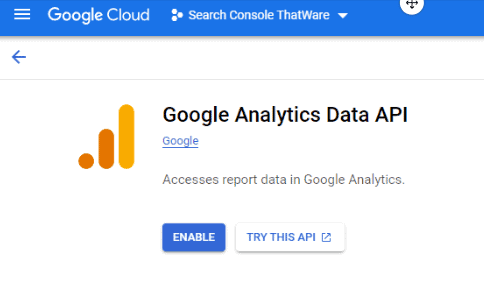
These are the entire Google Developer Console steps to consider.
REST Resource – Methods
REST Resource: v1beta.properties
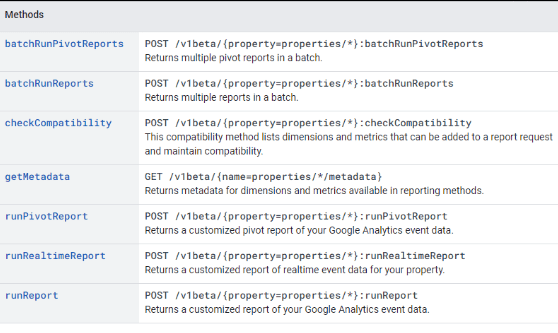
REST Resource: v1alpha.properties

Now Let’s Indulge Into the Importance of Google Analytics Data API
The importance of the Google Analytics Data API in today’s digital era is multifaceted and profound. As businesses increasingly rely on their online presence to connect with customers, drive sales, and expand their reach, the ability to gather, analyze, and interpret data has become paramount. In this context, the Google Analytics Data API emerges as a powerful tool, offering unparalleled insights into website and app performance, user behavior, and marketing effectiveness. Here, we delve into the myriad ways in which the Google Analytics Data API shapes and informs decision-making in the digital landscape.
Comprehensive Data Collection and Analysis:
At the heart of its significance lies the Google Analytics Data API’s capacity for comprehensive data collection and analysis. In an age where every click, view, and interaction holds valuable insights, the ability to capture and distill this data into actionable intelligence is indispensable. By leveraging the API, businesses gain access to a wealth of information, including website traffic, user demographics, referral sources, and conversion metrics. This granular level of detail empowers organizations to gain a holistic understanding of their online presence, identify patterns and trends, and make data-driven decisions to optimize performance.
Moreover, the API enables continuous monitoring and real-time reporting, allowing marketers to adapt strategies dynamically. With customizable queries and seamless integration into data visualization tools, it ensures that insights are not only timely but also easy to interpret. Businesses can automate workflows, compare multi-channel performance, and even forecast future outcomes based on historical trends. Ultimately, this strategic use of data helps sharpen competitive advantage and foster long-term growth.
Real-time Monitoring and Tracking:
In today’s fast-paced digital landscape, the ability to monitor and track performance in real-time is critical. The Google Analytics Data API enables businesses to access up-to-the-minute data on website and app activity, allowing for timely interventions and adjustments. Whether it’s monitoring the success of a marketing campaign, tracking the performance of a new feature, or identifying sudden spikes or drops in traffic, real-time data empowers organizations to respond swiftly and effectively to changing circumstances. This agility is invaluable in a competitive environment where the ability to adapt quickly can mean the difference between success and failure.
Moreover, the Google Analytics Data API offers seamless integration with various platforms and tools, making it easier for analysts, marketers, and developers to collaborate in real-time. By leveraging these integrations, teams can build customized dashboards, automate reporting, and receive alerts when KPIs fluctuate. This not only streamlines workflow but also enhances decision-making. In an age where data drives strategy, having this level of control and insight isn’t just helpful—it’s essential.
Personalized User Experiences:
Central to the success of any digital endeavor is the ability to deliver personalized user experiences. By harnessing the power of the Google Analytics Data API, businesses can gain deep insights into user behavior, preferences, and interests. Armed with this knowledge, organizations can tailor their websites, apps, and marketing efforts to better meet the needs and expectations of their audience. Whether it’s recommending relevant products, customizing content, or optimizing the user journey, personalization enhances engagement, fosters loyalty, and drives conversions.
Optimized Marketing Strategies:
Effective marketing hinges on understanding your audience, refining your messaging, and optimizing your channels. The Google Analytics Data API provides a wealth of data to inform every aspect of your marketing strategy. From tracking the performance of individual campaigns to analyzing the effectiveness of different channels and messaging strategies, the API offers insights that enable organizations to refine their approach, allocate resources effectively, and maximize return on investment. Whether it’s identifying high-converting keywords, refining ad targeting criteria, or optimizing landing pages, data-driven marketing is essential for success in today’s competitive landscape.
Continuous Improvement and Iteration:
In the digital realm, stagnation is synonymous with obsolescence. To stay relevant and competitive, businesses must embrace a culture of continuous improvement and iteration. The Google Analytics Data API facilitates this process by providing the tools and insights needed to measure, analyze, and optimize performance over time. By tracking key metrics, setting benchmarks, and conducting A/B tests, organizations can identify areas for improvement, experiment with new strategies, and iterate based on real-world data. This iterative approach enables businesses to stay agile, adapt to changing market conditions, and drive sustainable growth in the long term.
Moreover, the flexibility of the Google Analytics Data API allows integration with various platforms, streamlining cross-channel analysis and providing a holistic view of user behavior. With automation and custom reporting features, teams save time while gaining deeper, actionable insights. As digital ecosystems grow increasingly complex, leveraging this API becomes less of an option and more of a necessity. Those who adapt quickly and intelligently will not only survive but lead their industries forward.
Data-Driven Decision-Making:
In an era defined by big data and analytics, gut instinct is no longer enough to guide strategic decisions. Instead, businesses must rely on data-driven insights to inform their choices and actions. The Google Analytics Data API empowers organizations to make informed decisions based on concrete evidence rather than guesswork or intuition. Whether it’s determining the optimal pricing strategy, identifying untapped market segments, or allocating resources to high-impact initiatives, data-driven decision-making minimizes risk, maximizes ROI, and positions businesses for success in an increasingly competitive landscape.
The Google Analytics Data API plays a central role in shaping and informing decision-making in today’s digital era. From comprehensive data collection and real-time monitoring to personalized user experiences and optimized marketing strategies, the API offers a wealth of insights that empower businesses to thrive in an ever-evolving landscape. By embracing a culture of continuous improvement and iteration and leveraging data-driven decision-making, organizations can unlock new opportunities, drive sustainable growth, and stay ahead of the curve in today’s digital-first world.
The Inclusion of Advanced Data Analysis Techniques
Expanding the guide to encompass advanced data analysis techniques utilizing the Google Analytics Data API introduces users to a realm of deeper insights and enhanced decision-making capabilities. Cohort analysis, a powerful method for understanding user behavior over time, allows businesses to segment users based on shared characteristics or actions and track their engagement and retention patterns. With the Google Analytics Data API, users can extract cohort data dynamically, enabling them to identify trends, pinpoint areas for improvement, and tailor their strategies to better meet the needs of specific user segments.
Segmentation, another vital analytical tool, enables users to divide their audience into distinct groups based on various criteria such as demographics, behavior, or acquisition channels. By leveraging the segmentation capabilities of the Google Analytics Data API, businesses can gain a nuanced understanding of their audience, uncovering valuable insights into user preferences, interests, and conversion drivers. This segmentation allows for highly targeted marketing campaigns, personalized content recommendations, and tailored user experiences, ultimately driving engagement and driving conversion rates.
Funnel analysis, meanwhile, provides a structured approach to understanding and optimizing the user journey, from initial interaction to conversion. By mapping out the steps users take on their path to conversion and analyzing drop-off points or bottlenecks, businesses can identify areas for optimization and implement strategies to streamline the conversion process. With the Google Analytics Data API, users can extract funnel data programmatically, enabling them to visualize, analyze, and iterate on their funnel structures to maximize conversion rates and drive revenue.
Lastly, predictive modeling harnesses the power of machine learning algorithms to forecast future outcomes based on historical data. By leveraging the predictive modeling capabilities of the Google Analytics Data API, businesses can anticipate trends, identify opportunities, and mitigate risks, empowering them to make proactive, data-driven decisions. Whether it’s predicting customer churn, forecasting sales volumes, or optimizing marketing spend, predictive modeling offers invaluable insights that enable businesses to stay ahead of the curve and capitalize on emerging opportunities.
End Note
The Google Analytics Data API stands as a cornerstone in the digital landscape, empowering businesses with comprehensive insights, real-time monitoring, and personalized experiences. From optimizing marketing strategies to fostering continuous improvement, its multifaceted benefits drive informed decision-making and sustainable growth. By embracing data-driven approaches and leveraging advanced analysis techniques, organizations can unlock new opportunities and stay ahead in today’s dynamic environment. For further exploration and expert insights, follow the pages of ThatWare. Dive deeper into the realm of data-driven success.

Thatware | Founder & CEO
Tuhin is recognized across the globe for his vision to revolutionize digital transformation industry with the help of cutting-edge technology. He won bronze for India at the Stevie Awards USA as well as winning the India Business Awards, India Technology Award, Top 100 influential tech leaders from Analytics Insights, Clutch Global Front runner in digital marketing, founder of the fastest growing company in Asia by The CEO Magazine and is a TEDx speaker and BrightonSEO speaker.

